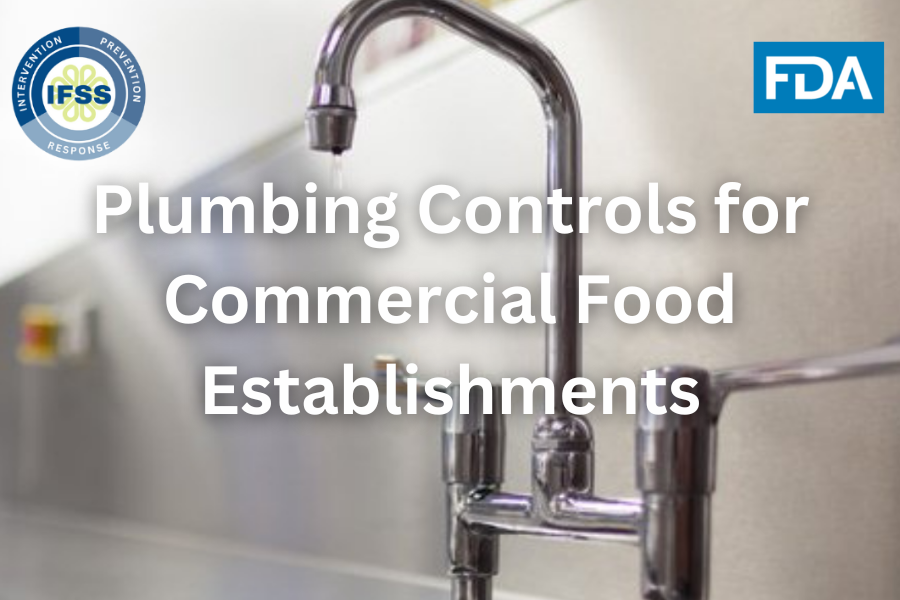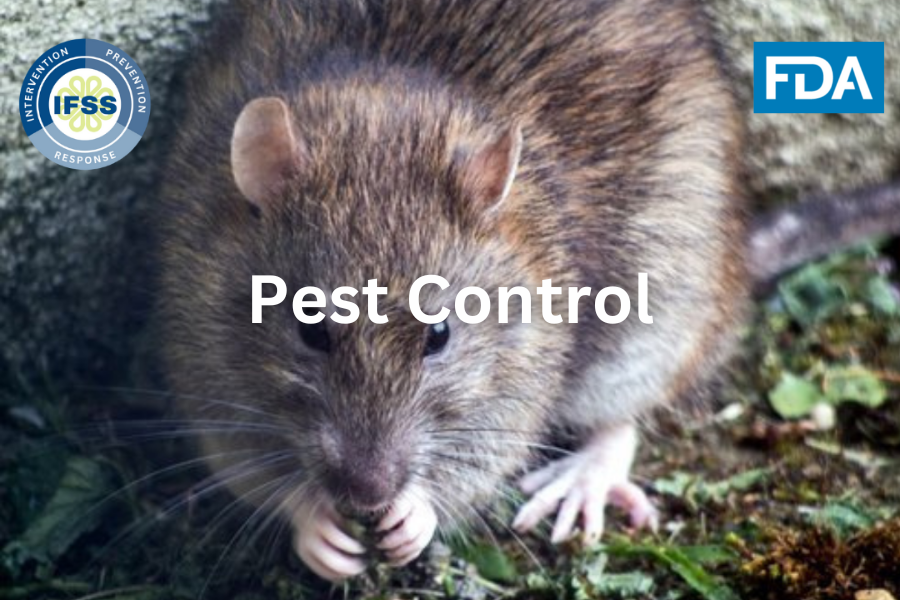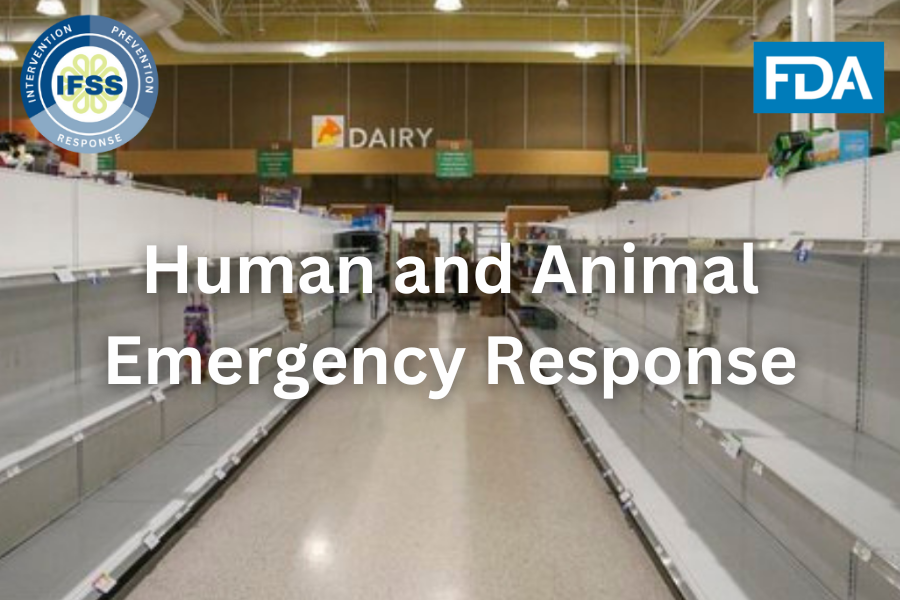FDA Basic Level Courses
Three FDA Basic Level courses have been redeveloped and are now available for enrollment on IFPTI’s Learning Resource Portal (LRP). These courses are built from the Basic Level of the FDA National Curriculum Standard.
This IFSS Basic Level Plumbing Controls for Commercial Food Establishments provides knowledge, skills, and abilities related to the delivery, distribution or storage of potable and non-potable water in a manufacturing food facility and retail food establishment.
Goal: Discuss how plumbing affects public health.
Scope: Covered by competencies/learning objectives listed.
Objectives:
Upon completion of Unit 1: Foundations, the participant will be able to recognize key concepts in plumbing:
recognize he three main factors regarding the public health significance to plumbing design
identify the two main water sources
recognize situations where water transport systems affect the safety of potable water
given a series of diagrams, the participant will be able to recognize the concept of backflow in water systems
given two diagrams, the participant will be able to identify direct and indirect connections.
Upon completion of Unit 2: Water Source, the participant will be able to recognize the public health significance of protection water sources:
given a series of images, the participant will be able to identify a public water supply system and private water supply system
list at least three well construction considerations that affect the safety of potable water
identify the two main types of treatment systems
Upon completion of Unit 3: Waste Water System, the participant will be able to recognize how waste water systems affect the safety of potable water:
identify two approved waste water systems that maintain the safety of potable water
identify public and private waste water systems
Upon completion of Unit 4: Backflow Prevention, the participant will be able to recognize methods for preventing contamination:
define the concept of cross connection
recognize the two main methods for preventing cross connections
identify different types of backflow prevention devices
recognize at least one consideration when selecting a backflow prevention device
Upon completion of Unit 5: Jurisdictional Authority, the participant will be able to recognize agency authority:
identify agency’s authority pertaining to water systems
Duration
Unit 1 Foundations – 40 minutes
Unit 2 Water Source – 23 minutes
Unit 3 Waste Water System – 15 minutes
Unit 4 Backflow Prevention – 28 minutes
Unit 5 Jurisdictional Authority – 8 minutes
This IFSS Basic Level Pest Control course provides introductory knowledge, skills, and abilities related the management of pests that can be perceived to be detrimental to the production of safe human food and food for animals.
Goal: Explain how pest activity can impact food safety.
Scope: Covered by competencies/learning objectives listed.
Course Objectives
Explain how pest activity can impact food safety.
1a: Describe integrated pest management.
1b: Describe a pest infestation.
1c: Recognize when to take regulatory action.
1d: Discuss agency options for dealing with pest issues.
1e: Describe pest control measures.
2: Discuss the importance of facility design for pest control.
2a: Give examples of pest exclusion in facility design.
2b: Discuss how plant and grounds maintenance will reduce harborage areas.
2c: Discuss the importance of pesticide storage areas.
2d: Discuss how pest control station layout would be used in a facility to control pests.
3: Describe sanitation practices for pest control.
3a: Recognize regulations associated with pest management (GMPS, GAPs, GRPs).
3b: Discuss sanitation measures to prevent adulteration from pests.
3c: Describe measures to eliminate sources that attract pests.
3d: Identify approved chemicals for pest control.
3e: Discuss importance of pesticide chemical labeling.
3f: Discuss importance of pesticide chemical storage.
3g: Recognize defect action level list.
4: Discuss detection of pests.
4a: Recognize evidence of presence of pests.
4b: Determine what equipment is needed for detection of pests.
4c: Discuss agency procedures for pest infestation.
5: Discuss how pest management is used to control pests.
5a: Discuss the importance of pest control.
5b: Describe a pest control plan.
5c: Discuss pesticides.
5d: Discuss an integrated pest management system.
6: Discuss resources and references related to pest control.
6a: Describe resources.
6b: Locate resources.
6c: Select resources.
Contact Hours:
Unit 1 Foundations – 40 minutes
Unit 2 Facility Design – 23 minutes
Unit 3 Sanitation Program – 25 minutes
Unit 4 Detection – 28 minutes
Unit 5 Integrated Pest Management – 20 minutes
Unit 6 Resources – 10 minutes
The IFSS Basic Level Human and Animal Food Emergency Response will provide introductory knowledge, skills, and abilities related to basic food safety concepts in the event of a food-related emergency.
Course Objectives
Foundations
Upon successful completion of this unit, the participant will be able to identify at least three basic food safety concepts used when responding to human and animal food emergencies.
ELO 1-1: Define “food-related emergency.
ELO 1-2: Identify basic food safety concepts as they relate to food emergencies.
ELO 1-3: Locate sources to learn about basic food safety concepts and emergency response.
UNIT 2: EMERGENCY MANAGEMENT RESPONSE STRUCTURE
Upon successful completion of this unit, the participant will be able to describe the overall emergency management approach of an effective response to a food emergency.
ELO 2-1: Recognize the four elements of the emergency management diagram.
ELO 2-2: Indicate the different organizational components of a successful response to a food-related emergency.
ELO 2-3: Recognize the important role that communication plays in the successful response to a food emergency.
UNIT 3: ADAPTING IN A FOOD SAFETY EMERGENCY
Upon successful completion of this unit, the participant will be able to recognize the importance in being adaptable in order to successfully participate in a response to a food safety emergency.
ELO 3-1: Identify significant personal aspects in a successful response to a food safety emergency.
ELO 3-2: Recognize temporary and situationally specific changes.
UNIT 4: PRESERVING PERSONAL SAFETY
Upon successful completion of this unit, the participant will be able to determine how best to preserve their own personal safety in an emergency response situation.
ELO 4-1: Identify the importance of being aware of all aspects of the situation you find yourself in.
ELO 4-2: Recognize the personal protective equipment (PPE) that you need to use to preserve your personal safety.
UNIT 5: TAKING ACTION
Upon successful completion of this unit, the participant will be able to identify the tasks that an entry-level regulator is likely to perform in a food emergency incident.
ELO 5-1: Recognize the actions that an entry-level regulator is likely to perform as a member of a strike team.
ELO 5-2: Illustrate the ways in which an entry-level regulator may interact with the public during a food emergency incident.
ELO 5-3: Recognize common methods that can be used to work with other agencies during a food emergency incident.
Course duration: approximately 90 minutes



